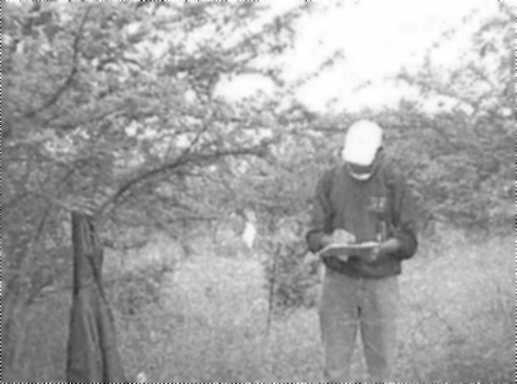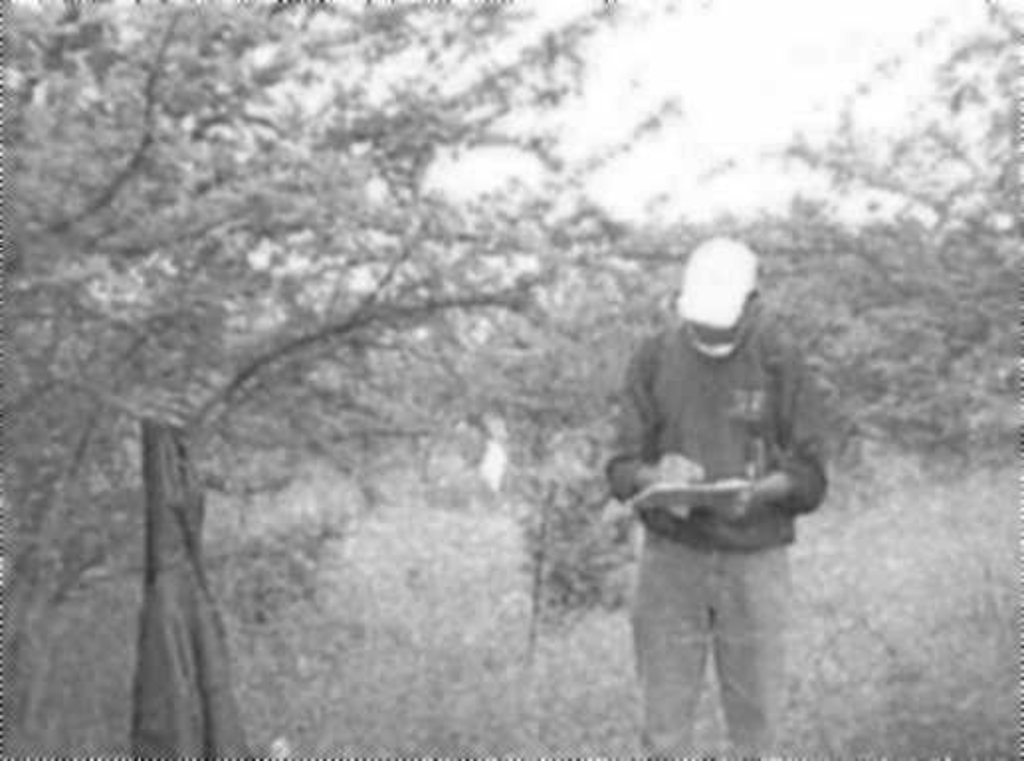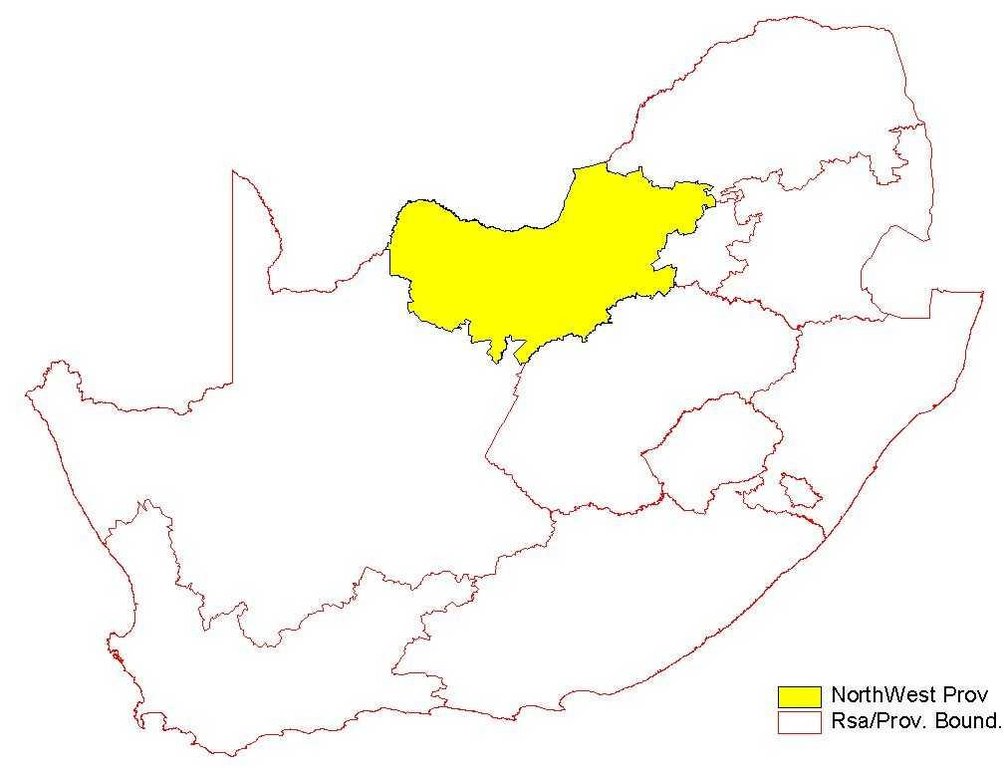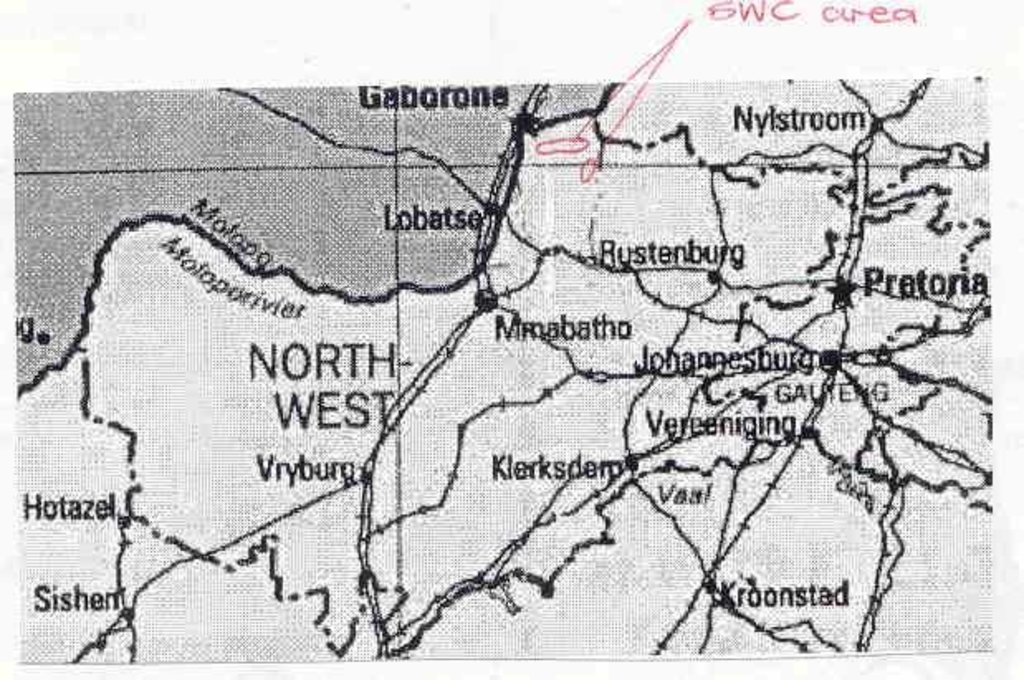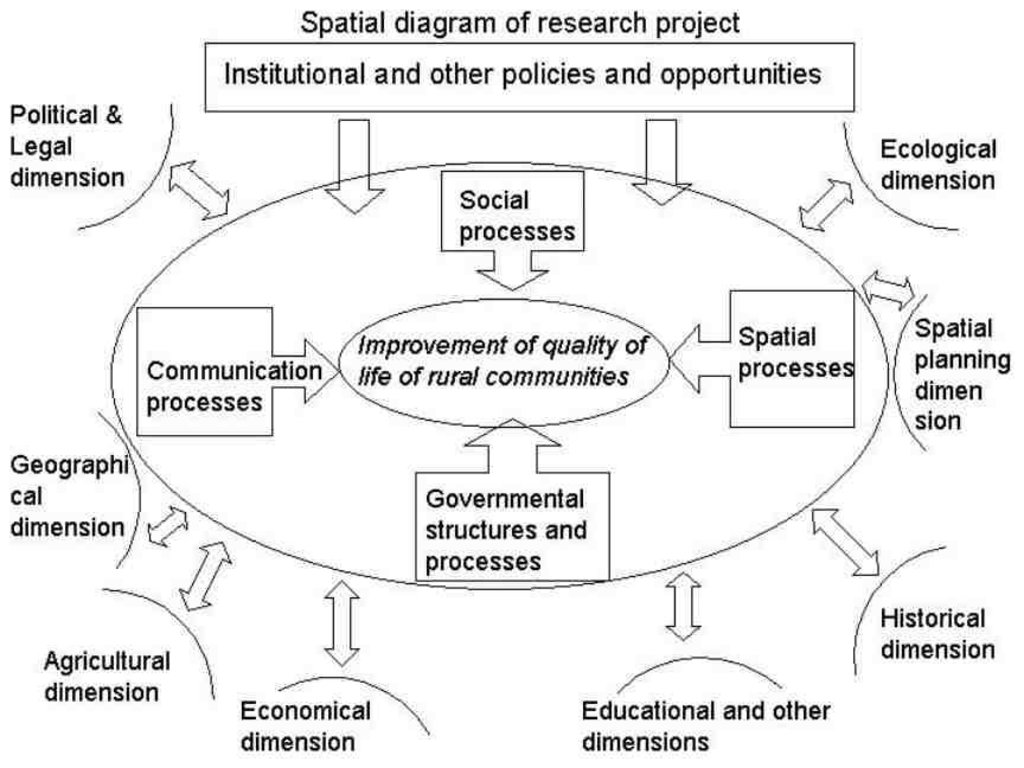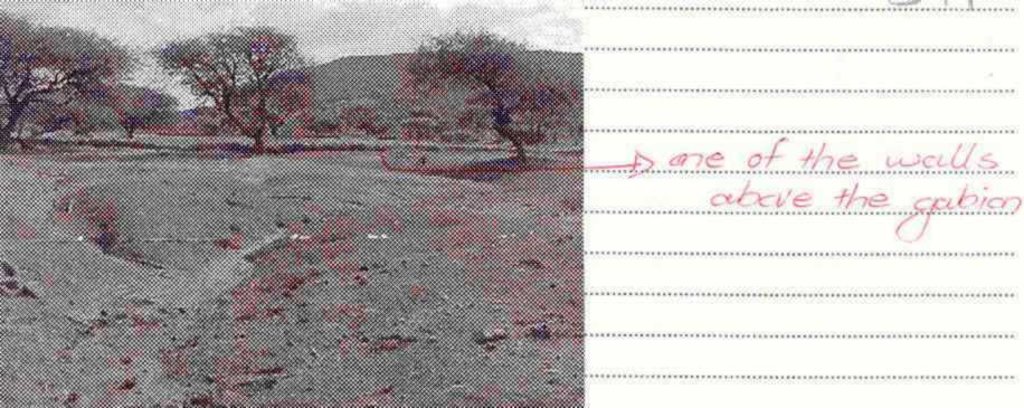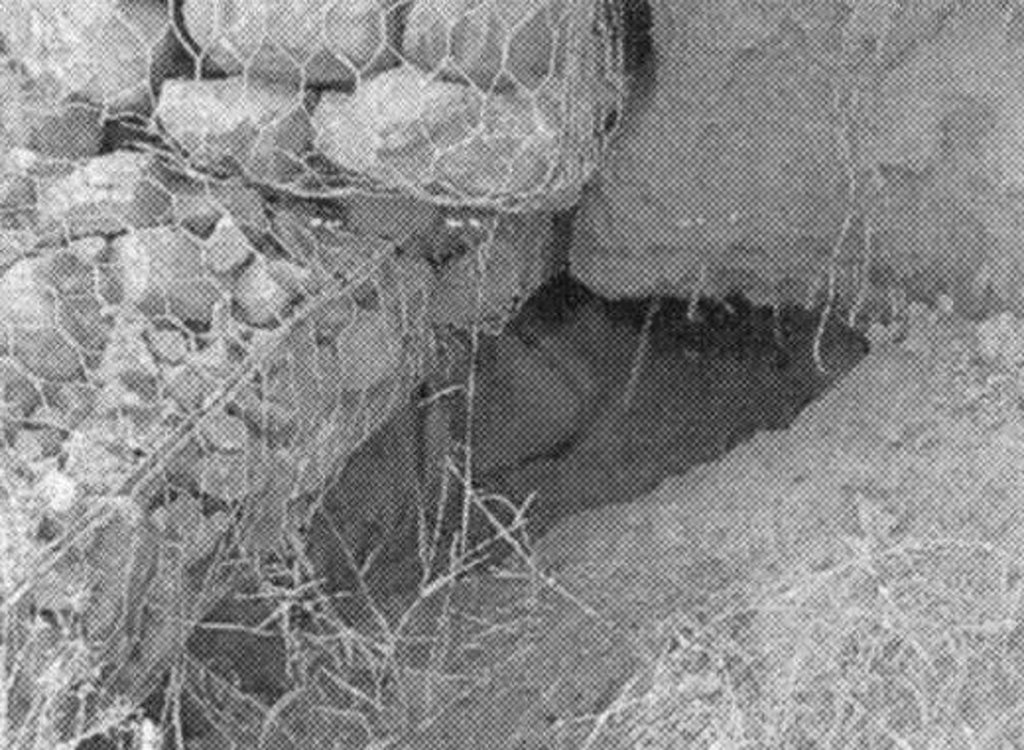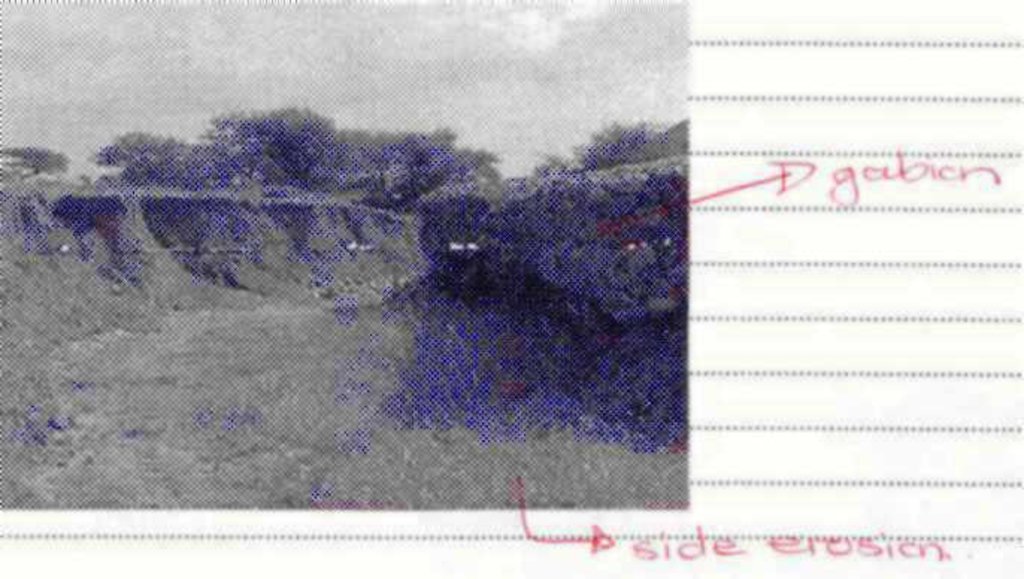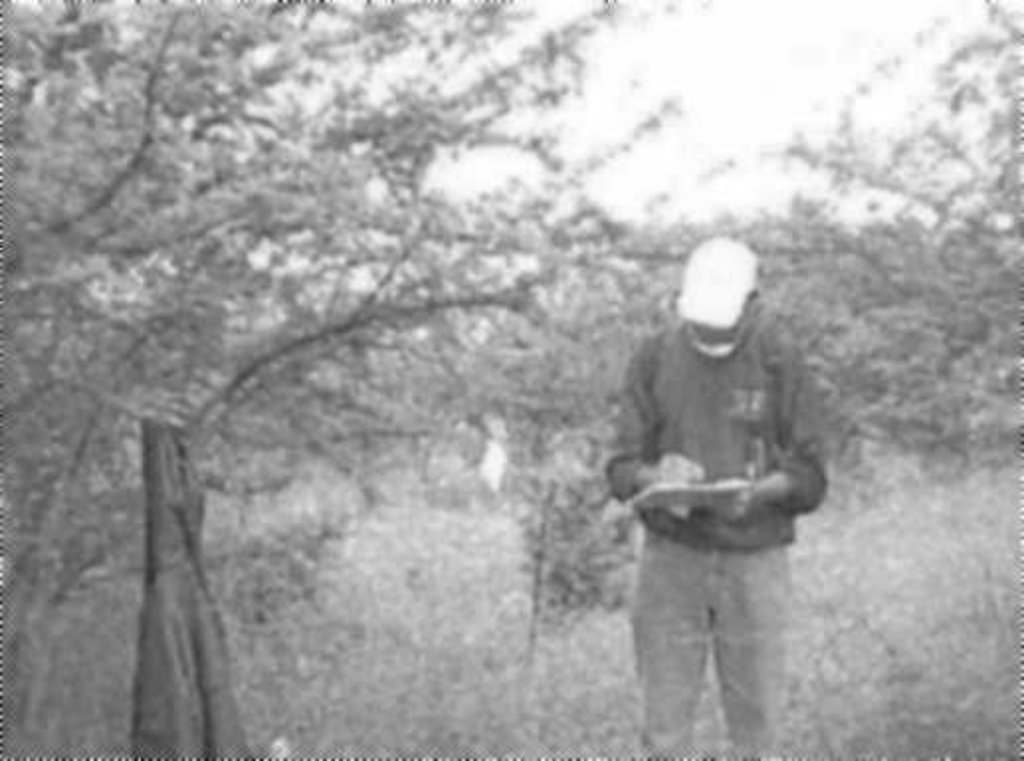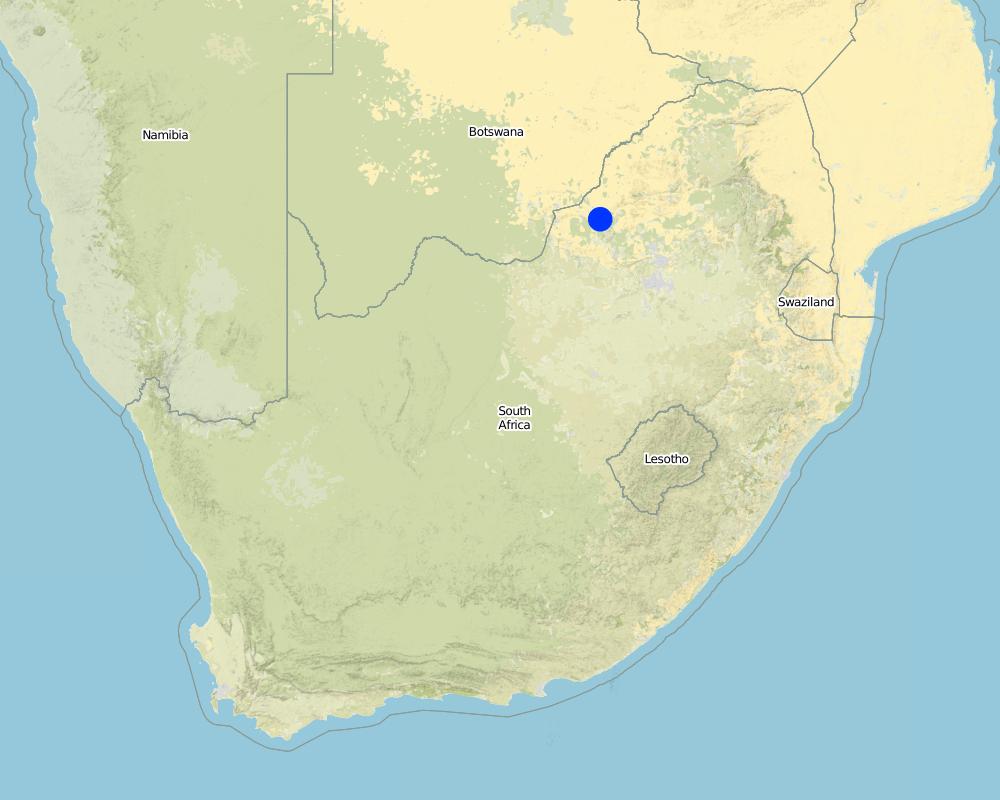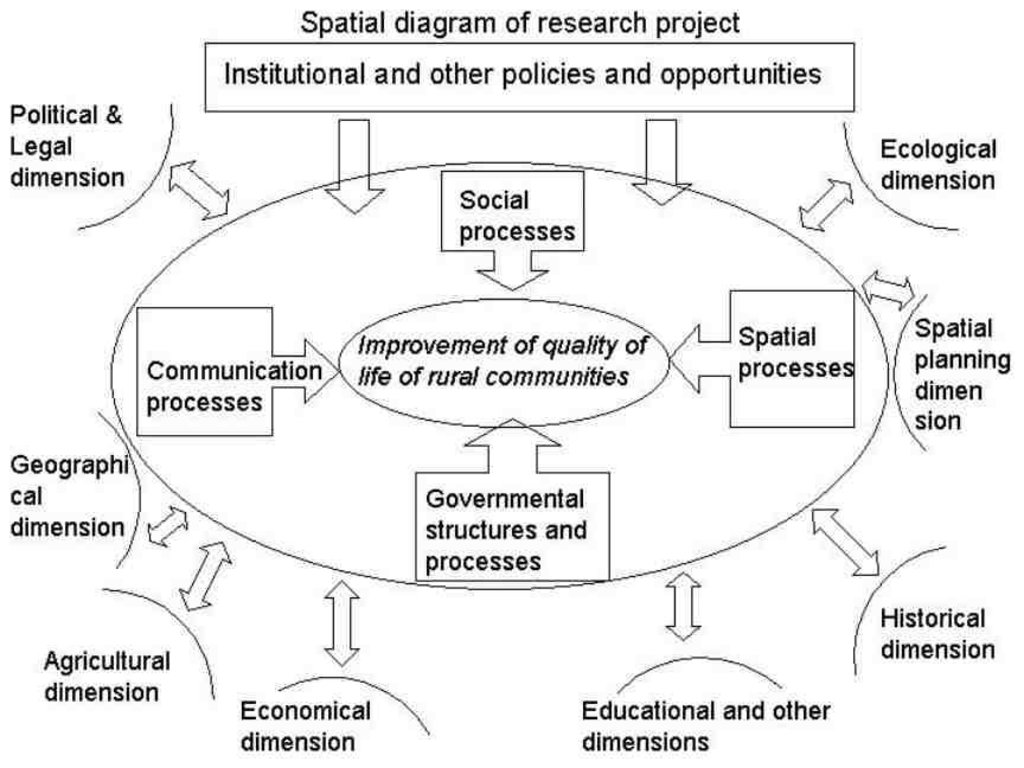Participatory rural approach [Afrique du Sud]
- Création :
- Mise à jour :
- Compilateur : Unknown User
- Rédacteur : –
- Examinateur : Fabian Ottiger
approaches_2340 - Afrique du Sud
Voir les sections
Développer tout Réduire tout1. Informations générales
1.2 Coordonnées des personnes-ressources et des institutions impliquées dans l'évaluation et la documentation de l'Approche
Personne(s) ressource(s) clé(s)
Spécialiste GDT:
de Wet Saroné
School of Environmental Science and Development, North West University, South Africa
Afrique du Sud
Nom du ou des institutions qui ont facilité la documentation/ l'évaluation de l'Approche (si pertinent)
School of Environmental Science and Development, North West University (NWU) - Afrique du Sud1.3 Conditions relatives à l'utilisation par WOCAT des données documentées
Le compilateur et la(les) personne(s) ressource(s) acceptent les conditions relatives à l'utilisation par WOCAT des données documentées:
Oui
2. Description de l'Approche de GDT
2.1 Courte description de l'Approche
Participatory Rural Approach including a partly holistic approach; between social and environmental sciences.
2.2 Description détaillée de l'Approche
Description détaillée de l'Approche:
Aims / objectives: Developing sustainable management of land and other natural resources in rural communities. Assess the historical process, causes, nature and extent of desertification and its human impact. An empirical study of the attitudes, perceptions and knowledge of the local population with regard to land use. Develop policy guidelines for integrated rural development focussing on spatial planning, settlement models, land use control measures, ecological restoration and sustainable farming practices. Pilot interviews with the extension officers were followed by interviews with members of the communities themselves. Plant surveys were conducted at the study areas.
Stages of implementation: There were 5 stages of implementation included in the pilot interviews, the main interviews and the plant surveys. Task 1: Preliminary negotiations with officials, authorities and local communities, including a literature and methodological review. Task 2: Data collection includes satellite data and aerial photographs, ground truth (site visits, meetings, surveys, interviews and questionnaires - a PRA approach. Task 3: Analysis and interpretation include archival research, image processing ad interpretation and analysis of surveys and questionnaires. Task 4: Validation and cross referencing by accuracy testing of remotely sensed results, historical cross referencing, comparison to Botswana results, comparison of results (communal land vs. commercial land). Task 5: Reporting.
2.3 Photos de l'approche
2.5 Pays/ région/ lieux où l'Approche a été appliquée
Pays:
Afrique du Sud
Région/ Etat/ Province:
North West Province
Map
×2.6 Dates de début et de fin de l'Approche
Indiquez l'année de démarrage:
2000
Date (année) de fin de l'Approche (si l'Approche n'est plus appliquée):
2003
2.7 Type d'Approche
- fondé sur un projet/ programme
2.8 Principaux objectifs de l'Approche
The Approach focused mainly on other activities than SLM (Suitable management, integrated community-base, rural development, land resources, natural resources.)
Developing sustainable management of land and other natural resources in rural communities. Specific objectives: Assess the historical process, courses, nature and extent of desertification and its human impact. Did an empirical study of the attitudes, perceptions and knowledge of the local population with regard to land use. Finally, we want to develop policy guidelines for integrated rural development focussing on spatial planning, settlement models, land use control measures, ecological restoration and sustainable farming practices.
The SLM Approach addressed the following problems: Desertification and its human impact, with the specific incorporation of indigenous or traditional knowledge. Inadequate policy towards integrated rural development.
2.9 Conditions favorisant ou entravant la mise en œuvre de la(des) Technologie(s) appliquée(s) sous l'Approche
disponibilité/ accès aux ressources et services financiers
- entrave
Funding not sufficient
Treatment through the SLM Approach: Involved with greater Department of Agriculture and subsequent funding
cadre institutionnel
- entrave
Part of previous disadvantaged homeland
Treatment through the SLM Approach: Policy recommendations
cadre juridique (régime foncier, droits d'utilisation des terres et de l'eau)
- entrave
The existing land ownership, land use rights / water rights greatly hindered the approach implementation No one takes responsibility for maintaining the applied technology.
connaissances sur la GDT, accès aux supports techniques
- entrave
No contracts with large equipment companies
Treatment through the SLM Approach: With the Department of Agriculture, theses contract have been established
3. Participation et rôles des parties prenantes impliquées dans l'Approche
3.1 Parties prenantes impliquées dans l'Approche et rôles
- exploitants locaux des terres / communautés locales
Supingstad members. Specific ethnic groups: Tswana speaking (Ba-Suping)
- Spécialistes de la GDT/ conseillers agricoles
- enseignants/ élèves/ étudiants
University
- gouvernement national (planificateurs, décideurs)
- organisation internationale
3.2 Participation des exploitants locaux des terres/ communautés locales aux différentes phases de l'Approche
| Participation des exploitants locaux des terres/ communautés locales | Spécifiez qui était impliqué et décrivez les activités | |
|---|---|---|
| initiation/ motivation | aucun | |
| planification | interactive | interviews/questionnaires, public meetings; Interviews with most viable group. Public meetings: what should we look at in the areas. |
| mise en œuvre | interactive | casual labour, responsibility for minor steps; Erosion control. |
| suivi/ évaluation | aucun | |
| Research | aucun |
3.3 Diagramme/ organigramme (si disponible)
3.4 Prises de décision pour la sélection de la Technologie/ des Technologies
Indiquez qui a décidé de la sélection de la Technologie/ des Technologies à mettre en œuvre:
- principalement les exploitants des terres soutenus par des spécialistes de la GDT
Expliquez:
consultative.
Decisions on the method of implementing the SLM Technology were made by mainly by SLM specialists with consultation of land users. consultative.
4. Soutien technique, renforcement des capacités et gestion des connaissances
4.1 Renforcement des capacités/ formation
Une formation a-t-elle été dispensée aux exploitants des terres/ autres parties prenantes?
Oui
Spécifiez qui a été formé:
- exploitants des terres
- school children/students
Formats de la formation:
- sur le tas
Thèmes abordés:
Gabion construction
4.2 Service de conseils
Les exploitants des terres ont-ils accès à un service de conseils?
Oui
Spécifiez si le service de conseils est fourni:
- dans les champs des exploitants?
Décrivez/ commentez:
Participatory rural approach; Key elements: Involvement in gabion construction; 1) Mainly: government's existing extension system, Partly: projects own extension structure and agent. Extension staff: mainly government employees 3) Target groups for extension: land users; Activities: erosion control through gabion construction
Advisory service is inadequate to ensure the continuation of land conservation activities; Extension officers available for information on erosion and encroachment control.
4.3 Renforcement des institutions (développement organisationnel)
Des institutions ont elles été mises en place ou renforcées par le biais de l'Approche?
- oui, modérément
Spécifiez à quel(s) niveau(x), ces institutions ont été renforcées ou mises en place:
- local
Précisez le type de soutien:
- renforcement des capacités/ formation
4.4 Suivi et évaluation
Le suivi et l'évaluation font ils partie de l'Approche? :
Oui
Commentaires:
bio-physical aspects were regular monitored through measurements
socio-cultural aspects were ad hoc monitored through observations
economic / production aspects were ad hoc monitored through observations
area treated aspects were regular monitored through measurements
no. of land users involved aspects were regular monitored through measurements
There were several changes in the Approach as a result of monitoring and evaluation: Initially only the extension officers were interviewed in groups; the communities as well, but in the end individual interviews proofed more effective. Woody component analysis: Where all members worked on one quadrate at the start, we changed the strategy to three teams of two people each, each team having their own specific responsibilities.
4.5 Recherche
La recherche a-t-elle fait partie intégrante de l’Approche?
Oui
Spécifiez les thèmes:
- sociologie
- écologie
- technologie
Donnez plus de détails et indiquez qui a mené ces recherches:
Sociology: interviews/trust building. Ecology: explain what we are doing. Technology: gabion construction
Research was carried out both on station and on-farm
5. Financement et soutien matériel externe
5.1 Budget annuel de la composante GDT de l'Approche
Si le budget annuel précis n'est pas connu, indiquez une fourchette:
- 10 000-100 000
Commentez (par ex. principales sources de financement/ principaux bailleurs de fonds):
Approach costs were met by the following donors: international non-government (funding): 80.0%; local community / land user(s) (labour, material): 20.0%
5.2 Soutiens financiers/ matériels fournis aux exploitants des terres
Les exploitants des terres ont-ils reçu un soutien financier/ matériel pour la mise en œuvre de la Technologie/ des Technologies?
Oui
5.3 Subventions pour des intrants spécifiques (incluant la main d'œuvre)
Si la main d'œuvre fournie par les exploitants des terres était un intrant substantiel, elle était:
- vivres-contre-travail
Commentaires:
Guides received food parcels. Other incentives; future change in policy.
5.4 Crédits
Des crédits ont-ils été alloués à travers l'Approche pour les activités de GDT?
Non
6. Analyses d'impact et conclusions
6.1 Impacts de l'Approche
Est-ce que l'Approche a aidé les exploitants des terres à mettre en œuvre et entretenir les Technologies de GDT?
- Non
- Oui, un peu
- Oui, modérément
- Oui, beaucoup
They did not adapt, but their awareness were raised.
Est-ce que l'Approche a amélioré les questions foncières et des droits d'utilisation qui entravent la mise en œuvre des Technologies?
- Non
- Oui, un peu
- Oui, modérément
- Oui, beaucoup
The people worked with the specialist in establishing the technology.
Did other land users / projects adopt the Approach?
- Non
- Oui, un peu
- Oui, modérément
- Oui, beaucoup
6.3 Durabilité des activités de l'Approche
Les exploitants des terres peuvent-ils poursuivre ce qui a été mis en œuvre par le biais de l'Approche (sans soutien extérieur)?
- non
Si non ou incertain, spécifiez et commentez:
No: Erosion - the wire mesh baskets must be supplied by the appropriate companies, but otherwise they might pack stones without the wire mesh baskets. Yes for bush encroachment.
6.4 Points forts/ avantages de l'Approche
| Points forts/ avantages/ possibilités du point de vue de l'exploitant des terres |
|---|
| Awareness of erosion and bush encroachment as well as possible solution to it (How to sustain/ enhance this strength: School available; provide with poster, books, etc. Farmer's meetings.) |
| A community member can make a difference. |
| Points forts/ avantages/ possibilités du point de vue du compilateur ou d'une autre personne ressource clé |
|---|
| Trust of people obtained (How to sustain/ enhance this strength: Deliver on the promises) |
| The community was motivated to implement their own water supply |
| Awareness of grazing strategy on the condition of the grazing field (How to sustain/ enhance this strength: Motivate extension officer to really provide appropriate solutions) |
6.5 Faiblesses/ inconvénients de l'Approche et moyens de les surmonter
| Faiblesses/ inconvénients/ risques du point de vue de l’exploitant des terres | Comment peuvent-ils être surmontés? |
|---|---|
| The projects do not address the problems the land users have | Refer identified problems to the relevant experts |
| Implementation of project takes a long time | Explain to the involved person the planned time schedule |
| Faiblesses/ inconvénients/ risques du point de vue du compilateur ou d'une autre personne ressource clé | Comment peuvent-ils être surmontés? |
|---|---|
| Number of available SWC specialist insufficient for amount of work | Train the amount of specialist/give the necessary background. |
| Use of translators | Make it clear to exact translations are given |
| Linguistic abilities not sufficient | Use translators |
7. Références et liens
7.1 Méthodes/ sources d'information
- visites de terrain, enquêtes sur le terrain
- interviews/entretiens avec les exploitants des terres
Liens et modules
Développer tout Réduire toutLiens
Aucun lien
Modules
Aucun module trouvé


